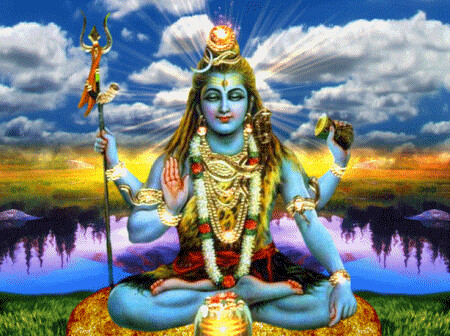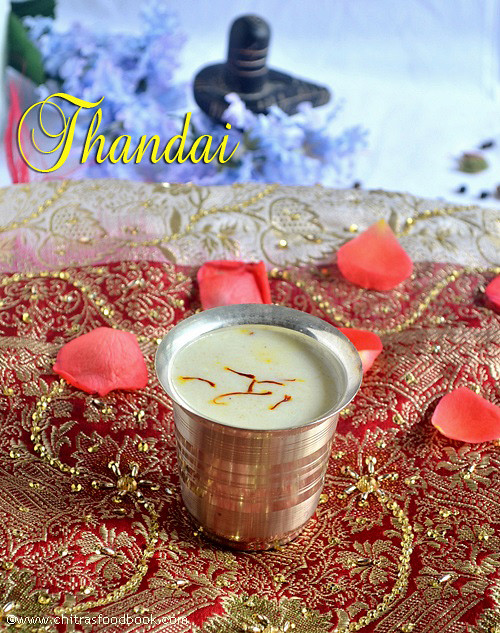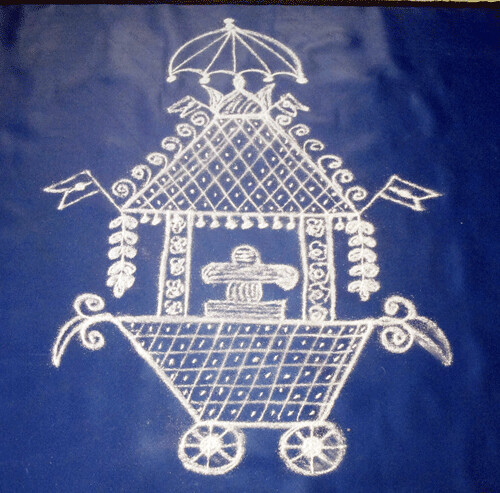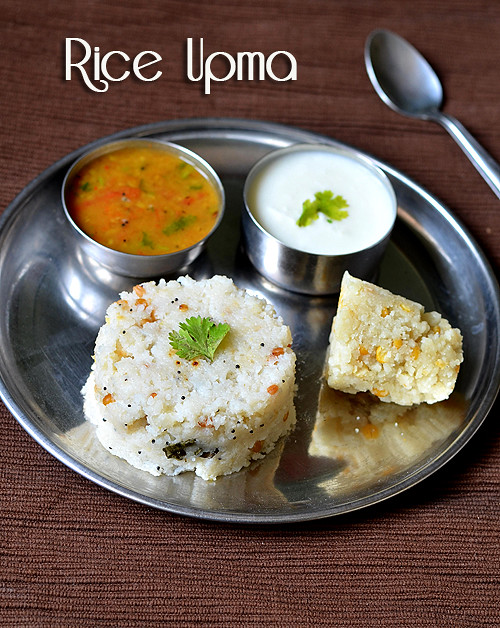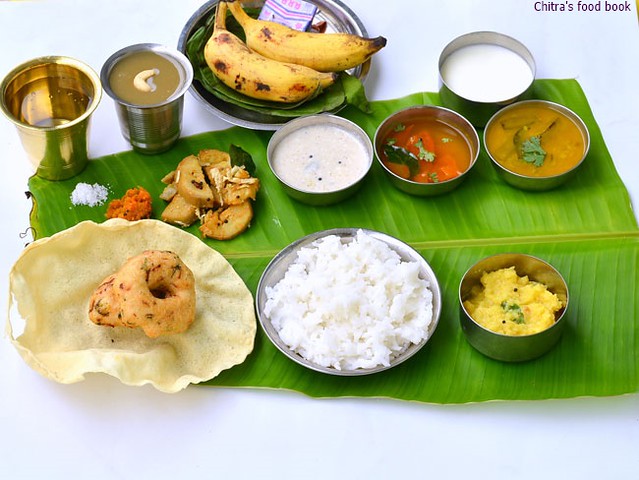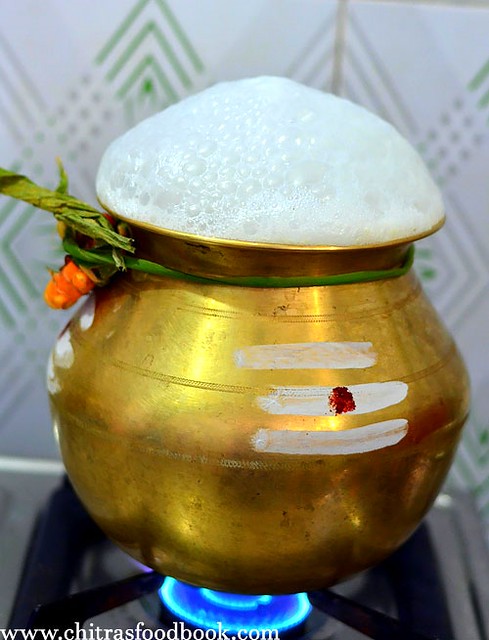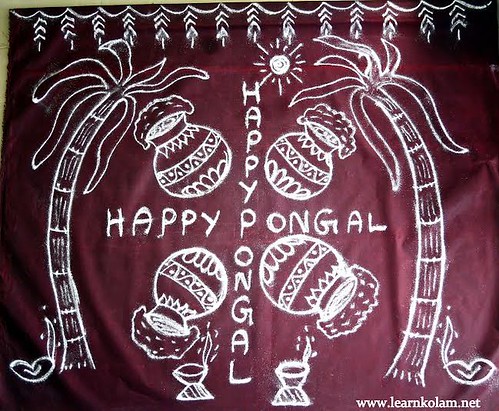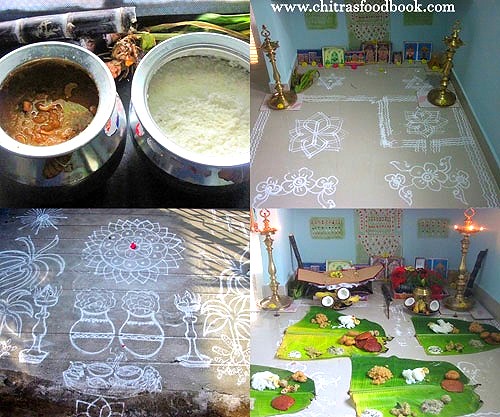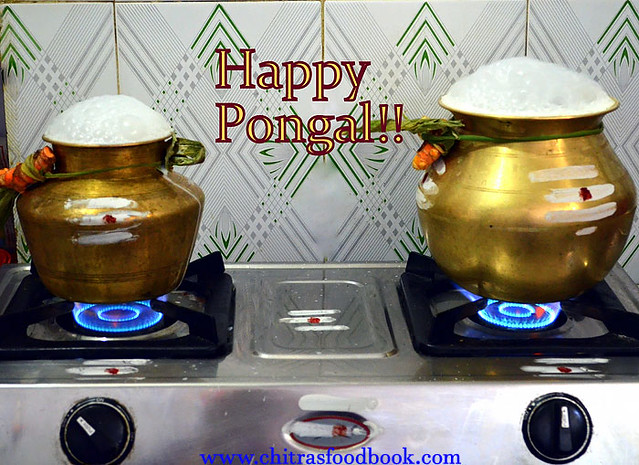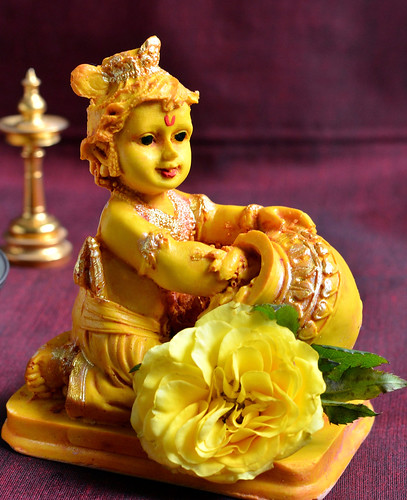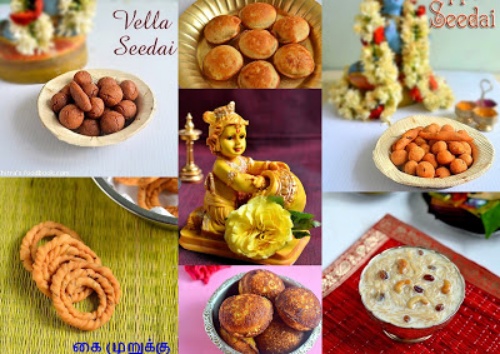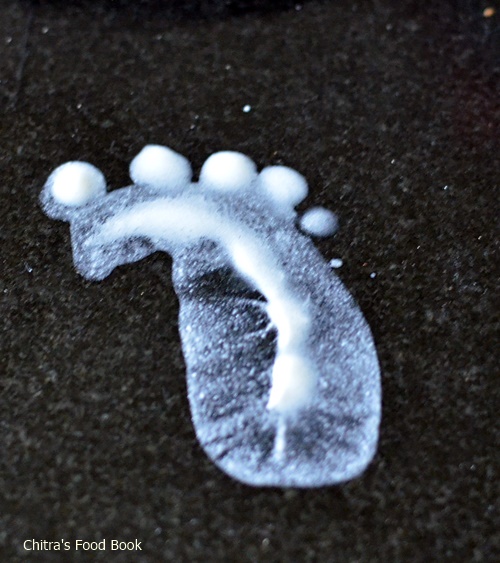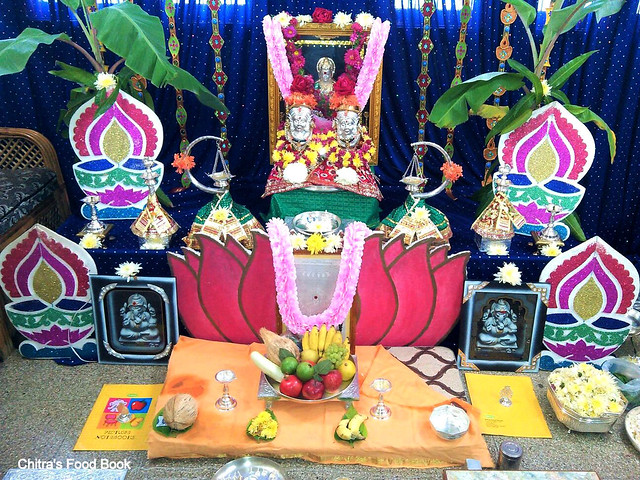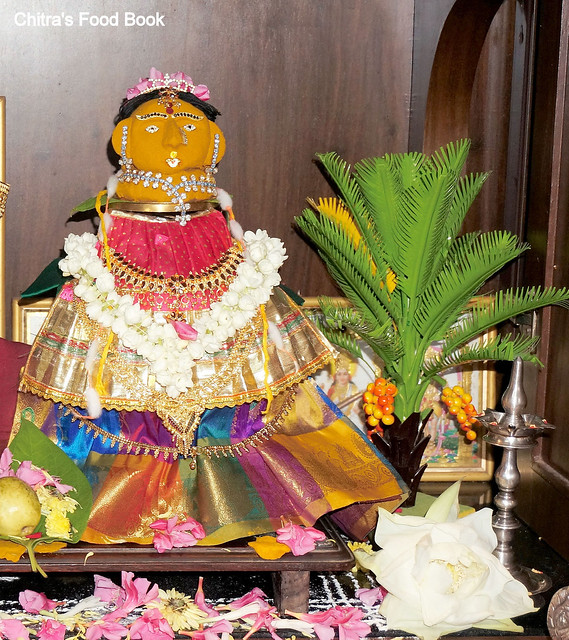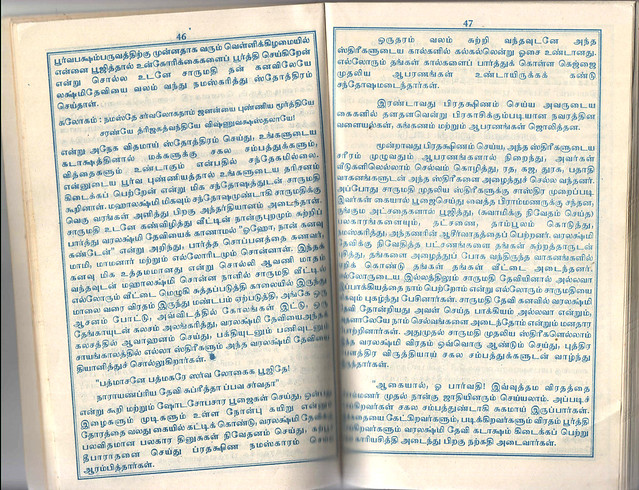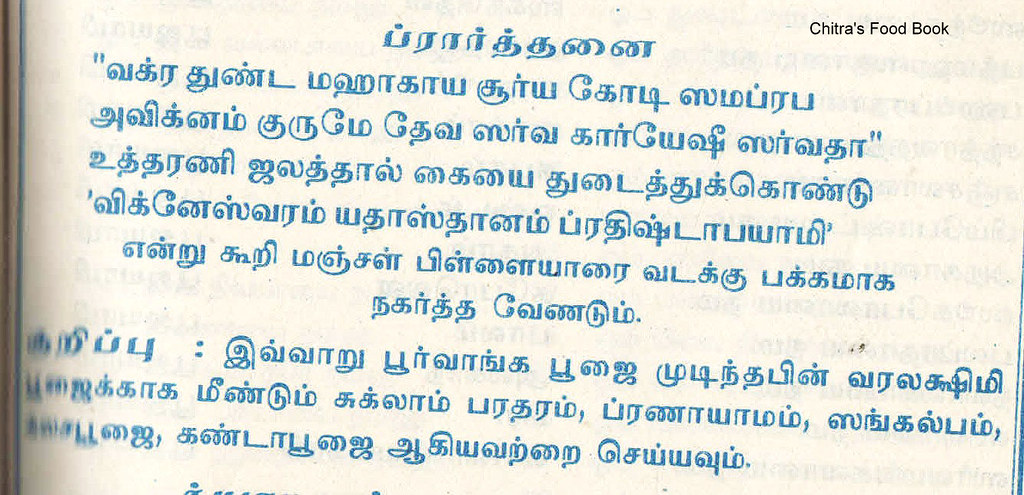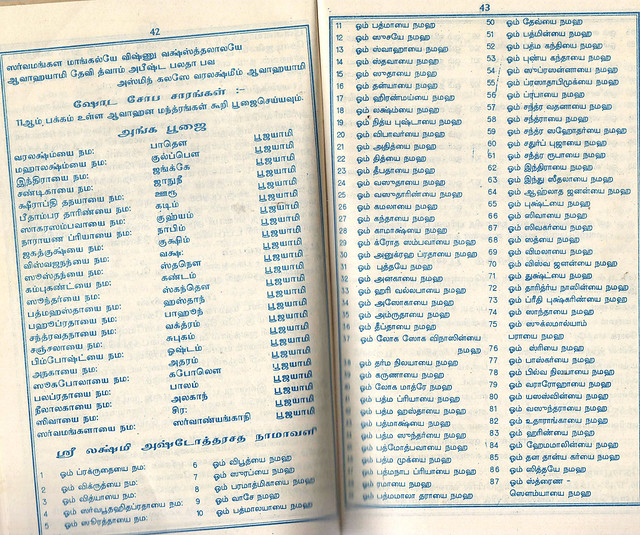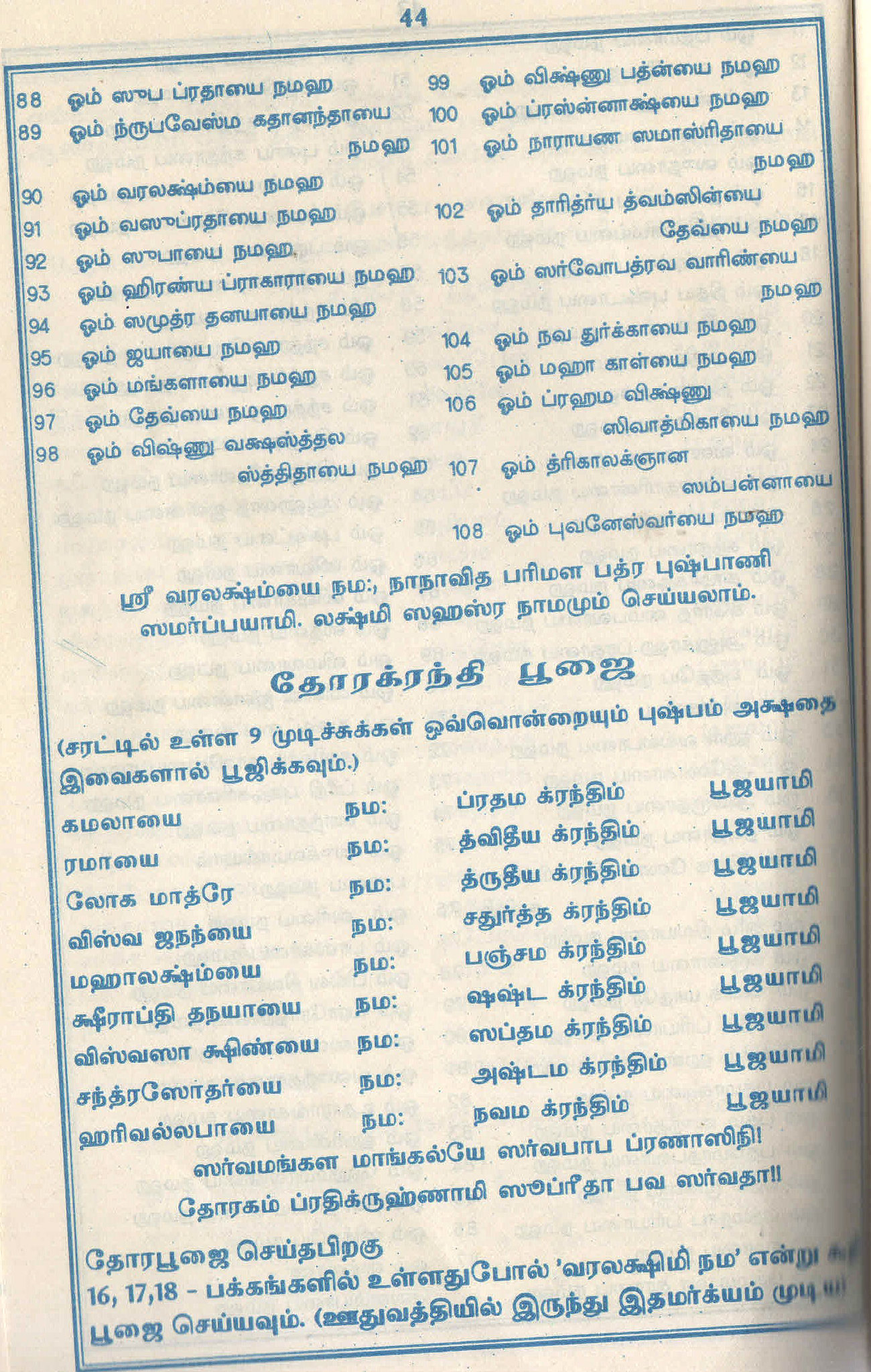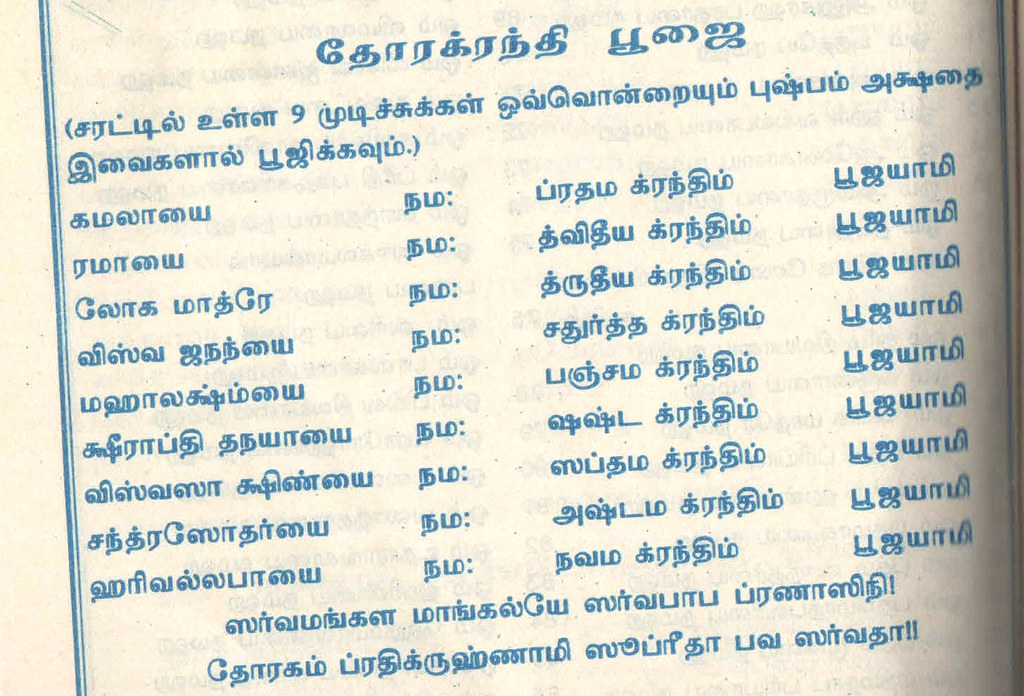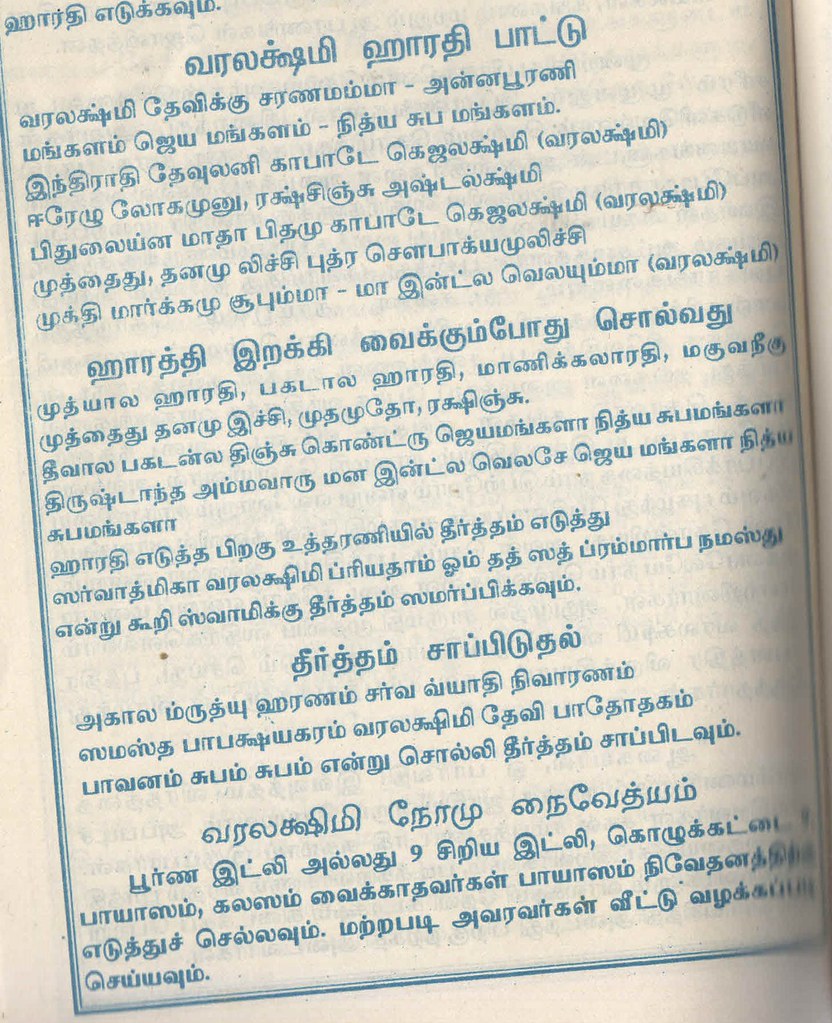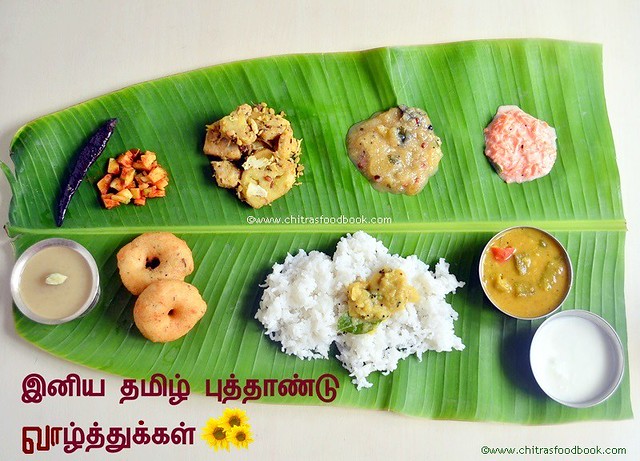
This year, Tamil new year falls on April 14, 2024, Sunday. Tamil people all over the world celebrate this day by Keeping new Panchangam and offering some special dishes like Mango Pachadi, Panakam, Neer mor etc. This festival falls in the month of Chithirai, the first month of the Tamil solar calendar. On the eve of Chithirai Puthandu, a tray arranged with three fruits (mango,banana and jack fruit), betel leaves and arecanut, gold/silver jewellery, coins/money, flowers and a mirror is placed. This is to be viewed upon waking in the morning.
In the temple city of Madurai, the Chithirai Thiruvizha is celebrated in the Meenakshi Temple. In Kerala, people celebrate this day as Vishu festival. The day is marked with a feast in Tamil homes and entrances to the houses are decorated elaborately with Maa kolams (Visit my in-laws blog to check varieties of Kolams). In most parts of India, one can see neem trees blooming with their flowers and the first batch of mangoes hanging prominently. So this day is celebrated with neem flowers and raw mangoes to symbolize growth and prosperity ( Source:Wiki).
As I am posting the celebration procedures of all our Indian festivals, I guess my regular readers would be expecting this post from me :)). Though the celebration method is very simple, the specialty of this festival lies in including Raw mango, fresh or dried neem flowers & making an elaborate full meals lunch menu for offering God along with fresh fruits. We should include all the six taste on this day. Full meals menu includes Rice, Mango Pachadi, Paruppu, Sambar, Poriyal, Kootu, Payasam, Vada. You should make Panakam and neer mor if you keep Panchangam for pooja else its optional. You can do it for Rama navami. Lets see the celebration procedure of Tamil new year with recipe links.
In the temple city of Madurai, the Chithirai Thiruvizha is celebrated in the Meenakshi Temple. In Kerala, people celebrate this day as Vishu festival. The day is marked with a feast in Tamil homes and entrances to the houses are decorated elaborately with Maa kolams (Visit my in-laws blog to check varieties of Kolams). In most parts of India, one can see neem trees blooming with their flowers and the first batch of mangoes hanging prominently. So this day is celebrated with neem flowers and raw mangoes to symbolize growth and prosperity ( Source:Wiki).
As I am posting the celebration procedures of all our Indian festivals, I guess my regular readers would be expecting this post from me :)). Though the celebration method is very simple, the specialty of this festival lies in including Raw mango, fresh or dried neem flowers & making an elaborate full meals lunch menu for offering God along with fresh fruits. We should include all the six taste on this day. Full meals menu includes Rice, Mango Pachadi, Paruppu, Sambar, Poriyal, Kootu, Payasam, Vada. You should make Panakam and neer mor if you keep Panchangam for pooja else its optional. You can do it for Rama navami. Lets see the celebration procedure of Tamil new year with recipe links.
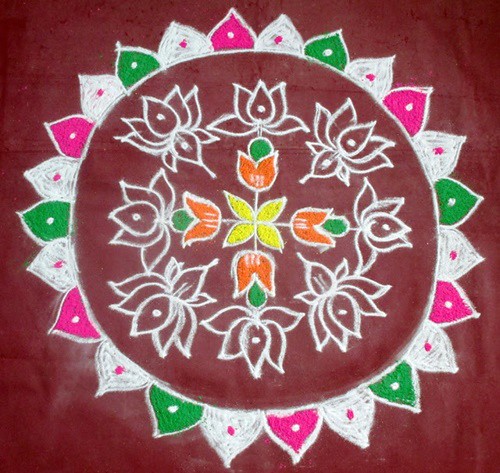
Kolam from my in-laws blog
Ingredients for Pooja & menuOn this day we avoid vegetables like Drumstick, Bottle gourd, brinjal, Keerai/greens, cabbage, Beetroot, Carrot, Beans, Potato, Onion and garlic in our cooking as we offer the lunch menu to God.
- Lamp
- Flowers
- KumKum and turmeric powder
- Betel leaves & nuts
- Banana leaf
- Coconut
- Match box, incense stick, dhoop, and camphor
- Banana, Mango & fruits like apple, jackfruit on your wish ( Banana is essential)
- Vegetables like Raw banana, cluster beans, Broad beans, Lady’s finger, Gooseberry etc
- Raw Mango ( Must buy)
- Dried or fresh neem flowers
- Urad dal for making vada
- Rice & dal, jaggery for making Payasam
- Other essentials for cooking
On the previous day i.e 13th of April, wash the lamps, clean the house. Decorate, put threads in the lamps. Buy all the required fruits, vegetables, groceries, flowers and pooja items for the festival and keep them ready. Some people have the practice of keeping fruits, flowers, rice, pulses, jaggery, a plate full of money and jewellery in front of a mirror in the pooja room. On April 14th morning, people used to see that before starting the day. Its called as Vishu kani celebration. If you have this practice in your home, please consult the elders of your house and arrange the fruits, groceries, money etc the previous night itself.
For cooking, wash and soak the urad dal for vada and grind the batter using mixie or grinder. Keep the batter in fridge without adding salt.
If you want, you can roast the rice & dal and keep it ready for making payasam the next day. Chop all the vegetables and store in a box if needed. These pre preparations can be done to make the lunch quickly.
You can do the pooja at any auspicious time. Make sure there is no Rahu Kalam and Yama kandam.
How to prepare the menu
On April 14th early morning, we take head bath and draw maa kolam in the entrance and before pooja room. Keep flowers and decorate the pooja room. Start preparing the lunch menu. Please check THIS POST to make this menu under one hour.
Pressure cook roasted rice+dal mixture for making payasam. In another cooker, keep the rice. After cooking rice+dal for payasam, add the jaggery and let it boil. Add coconut milk and cardamom powder. Add the fragrant spices like Pachai karpooram, Jathikai powder. Roast cashews in ghee and add to payasam. Transfer the payasam to a bowl and wash the cooker. In the same cooker, pressure cook moong dal for making paruppu. Temper mustard seeds, curry leaves and hing. Add to the cooked moong dal.
Make Mango pachadi. Keep it ready. Make sambar, Poriyal or kootu. We make either poriyal or kootu for the menu. You should make Panakam and neer mor if you keep Panchangam for pooja else its optional. Instead of this full meals menu, you can make 5 rice varieties like Lemon rice, Coconut rice, Sweet pongal, Tamarind rice and curd rice along with vada and payasam.
Lastly you can make Urad dal vada and appalam. Make Mormilagai and pickle if you wish.
If you can’t get Raw mango and Neem flowers, no issues. Just make some thayir pachadi with vegetables like carrot or lady’s finger or even with vada and offer to God.
How to do the pooja
After you finish cooking, wash the banana leaf and spread it in front of pooja place. Arrange all the prepared dishes in the banana leaf ( Check out my Full meals lunch menu post to view the order of arranging the dishes ). Light the lamps. Show the incense stick, do the neivedyam.Show the dhoop, deep and finish the pooja showing mangala Harathi.
Tamil New Year Recipe Links for making Full meals
FULL MEALS MENU
Tamil New Year Recipe Links for making Full meals
FULL MEALS MENU
-
Vendakkai sambar
-
Paruppu for rice
-
Mango pachadi
-
Carrot thayir pachadi ( recipe shared HERE )
-
Raw banana poriyal (recipe shared HERE)
-
Veppam poo rasam
-
Arisi Paruppu payasam/ rice, moong dal kheer
-
Pepper vada using mixie
-
Instant mango pickle
-
Panakam & Neer mor
OR
Variety Rice Recipes + Vada + Payasam
Please watch the video below to make 5 rice varieties easily.
-
Arachuvitta sambar – Brahmin’s style
-
Mango Sambar
-
Broad beans sambar
-
Pumpkin Sambar , cluster beans sambar
-
Morkuzhambu
-
Morkuzhambu with oats vada
KOOTU VARIETIES
Mixed vegetable kootu OR Avial without onion
PORIYAL VARIETIES
- Mixed vegetable poriyal
-
Sweet potato poriyal
-
Cluster beans/Kothavarangai poriyal
-
Raw banana curry/Vazhakkai poriyal
-
Raw banana curry - Chettinad style
-
Vazhaipoo poriyal
-
Raw banana poriyal
-
Easy vendakkai poriyal/Okra stir fry
PACHADI VARIETIES
OTHER LUNCH MENU IDEAS
-
Tamil nadu lunch menu 1
-
Tamil nadu lunch menu 2
-
No Onion No Garlic Lunch Menu
PAYASAM VARIETIES
Check out my 18 Payasam Varieties for full collection.
-
Aval payasam / Poha payasam
-
Thengai payasam/Coconut payasam
-
Paruppu payasam - Moong dal payasam
-
Rice payasam
-
Ada Pradhaman
-
Palada Payasam
-
Vermicelli payasam
Sweet pongal / sakkarai pongal in cooker
Obbattu/Puran poli
15 Easy Sweets collection
KESARI RECIPES
-
Rava Kesari Recipe
Kesaribath - Karnataka style
Semiya/Vermicelli kesari
Microwave rava kesari
Milk kesari/Paal kesari recipe
- All the above recipe links are for variations. You can try any based on the availability of ingredients. Its not a hard and fast rule to make a full meals and offer GOD. Some people celebrate Tamil new year just by offering a payasam and vada.
- If you are a bachelor and wish to do the pooja, you can simply soak Poha/Aval in Milk adding sugar & cardamom and offer to God. GOD will accept everything and anything if done whole heartedly. The celebration procedure I have shared here is based on my family practice. It may vary as per your tradition and custom. So beginners, please consult the elders of your family and do the pooja .
Wish you all a very happy & prosperous Tamil New Year !!
அனைவருக்கும் இனிய தமிழ் புத்தாண்டு நல் வாழ்த்துக்கள் !!!
Technorati Tags: Tamil new year recipes,Tamil new year celebration,Tamil new year celebration method,Tamil new year celebration procedure,Tamil new year pooja,tamil new year procedure,Tamil new year 2016,Pooja procedure,How to celebrate tamil new year,Tamil new year lunch menu,Varsusha pirappu recipes,Varuda pirappu menu,Puthandu recipes,festivals
Very good recipes Tags: Tamil new year recipes, Tamil new year celebration, Tamil new year celebration method, Tamil new year celebration procedure, Tamil new year pooja, tamil new year procedure, Tamil new year 2016, Pooja procedure, How to celebrate tamil new year, Tamil new year lunch menu, Varsusha pirappu recipes, Varuda pirappu menu, Puthandu recipes, festivals



